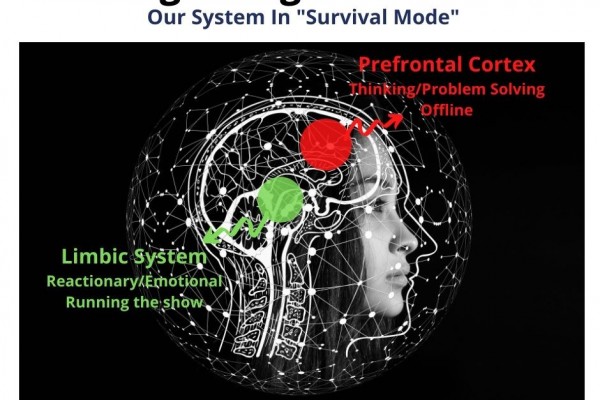The Reality Check Of Chronic Pain
Posted Sep 02, 2021 at 18:30
Posted Sep 02, 2021 at 18:30

The Ďreality checkí centre and chronic pain Ok. So you might have heard of or even experienced chronic pain and you may have some vague idea of how pain from the acute stage of injury can turn into chronic pain.
There may be some tissue damage, it heals but weakness persists or we develop compensatory movements and that is how we get chronic pain. Right? Or maybe you assume that it is the process of aging, right?
Not really.
Certainly, structural imbalances, weak or hypertonic muscles, scar tissue etc. can all lead to a change in function at our joinsand what forces are exerted on them leading to wear and tear and eventually pain as a warning that there is tissue damage occurring.
But that is only part of the whole picture. The question is why we would have the imbalances in the first place.
Letís look at the nervous system- the control system of everything that goes on in our body.
Before we start, letís consider a few things. The Brain adapts and changes all the time. This allows us to learn new things, make connections and associations. The whole nervous system adapts and learns. This is known as neuroplasticity, a word that you would have come across quite a lot in our blogs already.
There is a part of our brain called the prefrontal cortex which is the rational part of the brain to put it in simple words. This is where decisions are made based on facts.
However, under stressful situations, which can be a traumatic experience or injury, the prefrontal cortex gets turned off and the emotional part of the brain, the limbic system becomes more active. This is the part of the body responsible for emotions, but also it is the danger warning zone.
When that happens, a lot of things in our body change. There is an increase in the release of adrenaline and cortisol, increase in heart rate and blood pressure. Once the limbic part of the brain is activated and the prefrontal cortex inhibited, it leads to emotional arousal which manifests with irritability, irrationality, anger, mood swings, sadness, feeling tearful and so on.
In that state the big muscles in our limbs switch on as the body gets into the fight or flight mode and the smaller muscles closer to the spine Ďgo to sleepí. In reality, if we were in danger, the muscles that help move our limbs quickly and give them strength to fight opponents are more important than the ones that stabilize the spine and other joints. Since the brain needs information from the small muscles that are close to the spine to have a good map of the body, inhibition of these small muscles leads eventually to subluxation and finally affects movement and function of the body and its parts.
Over the time being in the limbic brain dominating state can lead to inflammation, problems with memory and attention, sleep disturbance, gastrointestinal disorders, addiction, mental health problems, autoimmune disorders, fibromyalgia, anxiety, depression, bipolar disorder. In chronic stages it is also linked to coronary artery disease, diabetes, cancers, obesity, Alzheimerís disease and endocrine disorders. The list can go on.
Spinal adjustments improve the body map that the brain sees and turn down the pain by activating the prefrontal cortex. The clearer the map of the body that the brain can see the better the nervous system is functioning which means everything in the body is functioning better.
This is why we put so much stress on assessing how your nervous system is functioning in our clinic. It is like the conductor of an orchestra. If it works great, the whole performance is a success. If the conductor doesnít know what is going on, the song will be played out of tune.